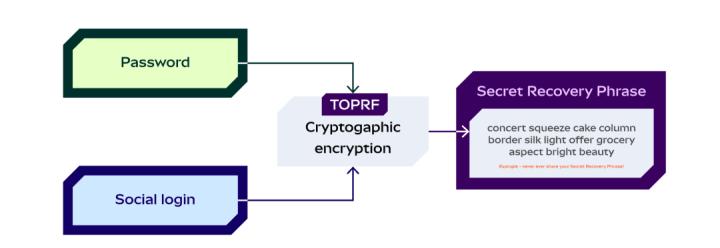 A quick overview of important events this week (3/16-3/22)
A quick overview of important events this week (3/16-3/22)
This week, the Federal Reserve decided to keep interest rates unchanged, but at the same time raised its inflation forecast and lowered its economic growth and employment outlook, showing concerns about stagflation. Although the Federal Reserve expects to cut interest rates twice in 2025 and plans to slow the reduction of its balance sheet starting in April, its cautious attitude towards rate cuts and uncertainty about the economic outlook continue to affect market sentiment. The remarks made by Federal Reserve Chairman Powell boosted U.S. stocks for a time, but the Fed’s policy difficulties remain the focus of market attention.
U.S. President Trump delivered a video speech at the 2025 Digital Asset Summit on the 20th, once again emphasizing his support for cryptocurrency and stablecoin legislation. However, overall there was no new highlight at all, and Bitcoin may have fallen below $84,000 due to this.
1. Policy and regulatory developments:
- US policy direction:
- The U.S. Securities and Exchange Commission (SEC)’s clear definition of PoW mining has brought significant regulatory benefits to the mining industry.
- The United States has also caused turmoil in the global economy due to itstariff policies on various countries.
- Global regulatory trends:
- The impact of the EU MiCA Act has become apparent , OKX has suspended related services, and global supervision has become stricter.
2. Market and transaction points:
- Bitcoin market volatility:
- The market has different views on the future of Bitcoin, and the price remains volatile, so investors need to pay close attention.
- The change in the price ratio of Bitcoin to gold has led to discussions in the market about whether the bull market is over.
- Exchanges and the memecoin craze:
- Binance actively promotesthe trading of meme coins , sparking heated discussions in the market.
- The trading volume of BNB Chain meme coin has surged, becoming the short-term market focus, but CZ reminded investors to pay attention to risks.
- ETF and Institutional Dynamics:
- Combining AI and blockchain:
- The application of AI agent technology is accelerating, and the NVIDIA GTC conference demonstrates its potential in the Web3 field.
- Google is also rumored to be working with MediaTek to developAI chips .
- Solana Ecosystem Development:
- The launch of the Solana phone has sparked heated discussions about Web3 phones.
 Overview of this week's trading market data
Overview of this week's trading market data
Market sentiment and sector performance
1. Fear and Greed Index
This week's market sentiment index ranged from 30 (neutral) to 31 (neutral), and has been in the (neutral) and (fear) range throughout the week.
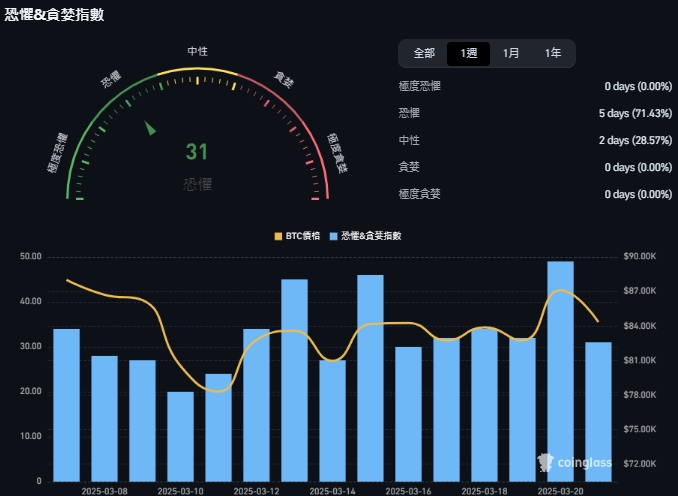
2. Sector performance
Artemis data shows that the average performance of the blockchain sector this week was +2.6% . The best performing sector was Bridge (+43.4%), followed by DeFi (+4.3%) and Perp DEX (+4.2%), which outperformed other sectors by a wide margin.
Bitcoin and Ethereum each saw slight declines, with Bitcoin (-0.1%) and Ethereum (+2.7%) performing relatively stable. Relatively speaking, the worst performing sectors were AI (-4.1%) and Meme Coin (-3.2%), which performed relatively weakly.

 Market Liquidity
Market Liquidity
1. Total cryptocurrency market capitalization and stablecoin supply
- Total market capitalization increased from $2.71 trillion to $2.78 trillion this week.
- BTC has a market share of 59.82% and ETH has a market share of 8.51% .
- Total stablecoin supply , from $209.65 billion to $210.55 billion .
2. Potential purchasing power within the exchange
Data shows that the net inflow of stablecoins on exchanges continued to be negative this week, reflecting that the trend of market capital inflows has further weakened and investors are cautious about market trends. Judging from the trend, the net inflow of stablecoins has been showing an outflow since mid-February, and the potential purchasing power within the exchange has continued to decline, which may weaken the upward momentum of the market.
Compared with the rapid increase in the amount of stablecoins in exchanges in December last year, when the highest daily net inflow exceeded US$15.4 billion, the recent market capital outflow has deteriorated significantly, with the lowest daily net outflow exceeding US$-3 billion since this week. This shows that the market lacks strong capital driving force in the short term, which may affect market liquidity and further exacerbate the volatility and pressure sentiment of risky assets.
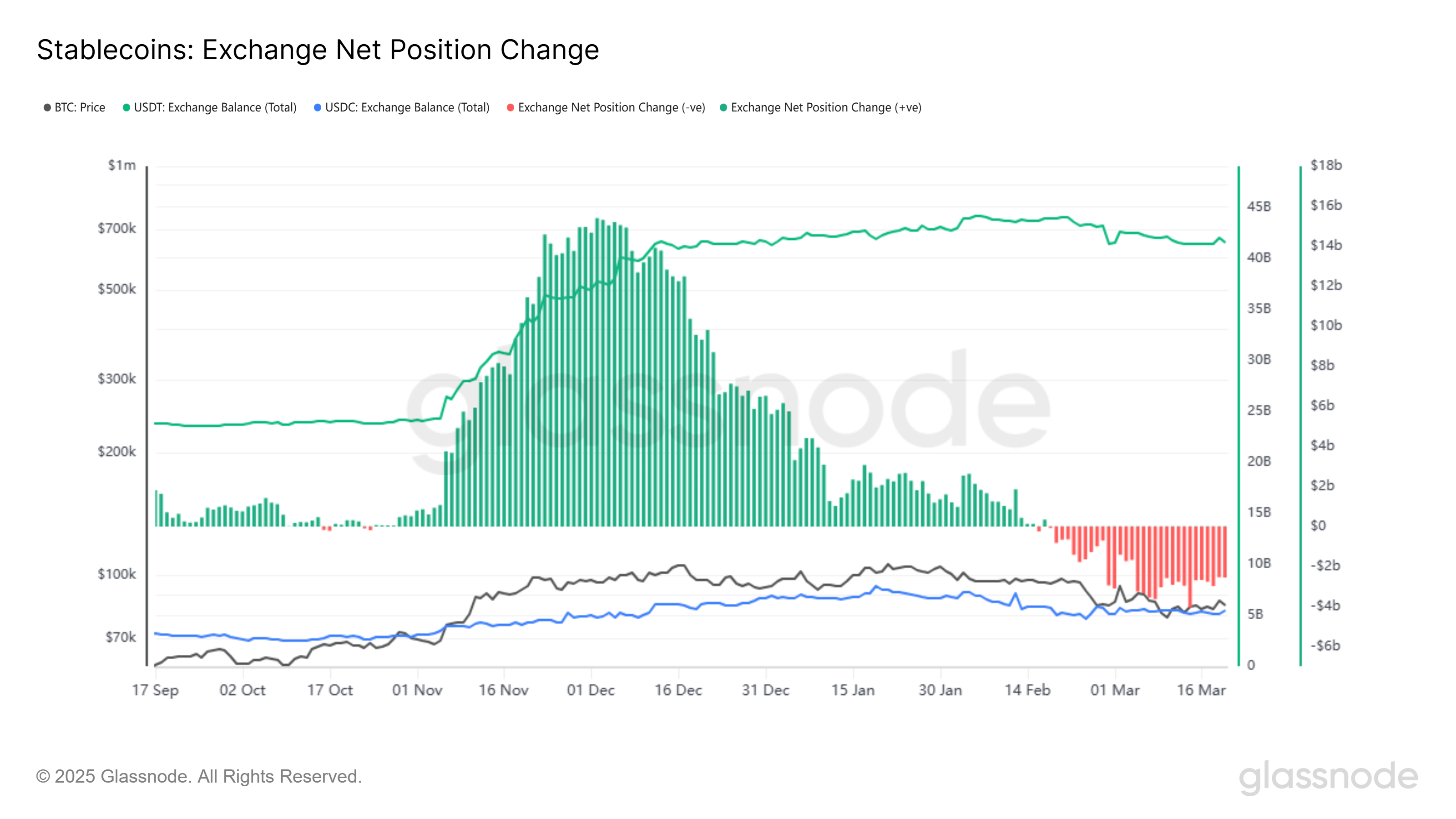
3. Encryption Dynamics
In the crypto market this week, Orca, Bounce, and LayerZero led the way with increases of +109%, +85.5%, and +78.4%, respectively.
According to CMC data , the current Altcoin seasonality index is 21 (up +7 from last week) .
The current bull market top escape signal is 0/30 , and no top escape warning has been triggered yet.
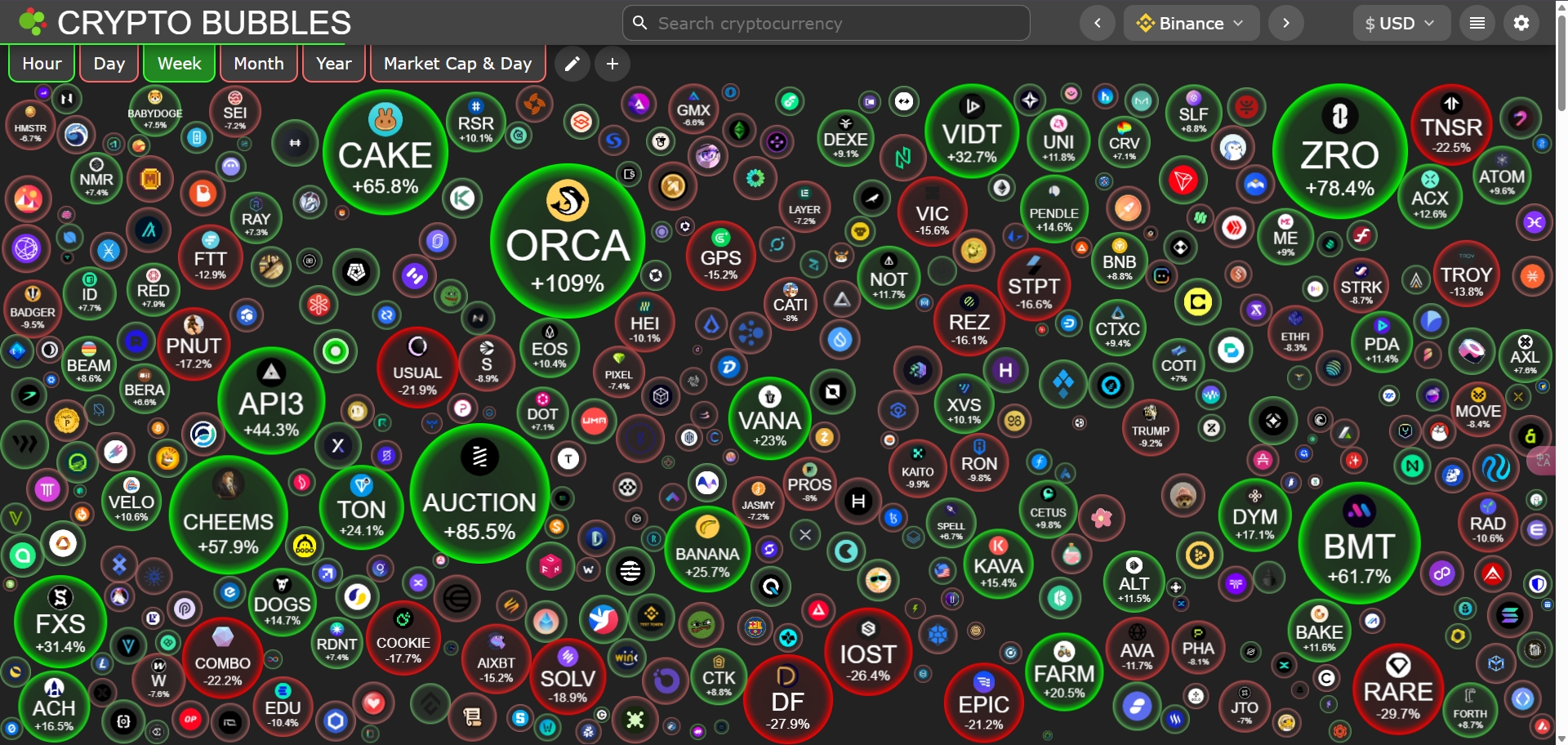
 Bitcoin Technical Indicators
Bitcoin Technical Indicators
1. Bitcoin Spot ETF Funds
Bitcoin ETFs saw inflows of $661.2 million this week.
2. Bitcoin open interest
According to the data , the total open interest holdings across the network have rebounded to $ 53.02 billion.
3. Bitcoin Rainbow Chart
The Bitcoin rainbow chart shows that the current price of Bitcoin ( $84,000 ) is in the " consider buying " range.
4. Coinbase Bitcoin Premium Index
This week, the Coinbase Bitcoin Premium Index continued to remain in the negative range. Buying demand in the US market was relatively weak and market selling pressure was still obvious. During this period, it briefly turned positive on March 19, indicating that there was a certain amount of capital inflow into the market at that time, but then turned negative again, and the market still lacked sustained buying support.
This week's premium index reached a local high on March 20, then quickly fell back and fell into the negative range again on March 21, with the lowest close to -0.07%. This shows that the demand for Bitcoin in the US market has not yet recovered to a high level, and there is great selling pressure from short-term traders.
Note: A positive premium may indicate that U.S. investors have stronger purchasing power than the global market, but historically, a negative premium of more than -0.2% is usually a buying opportunity.

5. Bitcoin net profit and loss performance
Bitcoin's realized net profit and loss indicator , market sentiment continues to fluctuate, BTC prices have maintained a consolidation state recently, and realized profit and loss has fallen sharply compared to the high point in December last year, gradually approaching the zero axis, indicating that profit-taking behavior in the market has increased.
The realized net profit and loss this week remained in the range of US$100 million to US$200 million. Investor sentiment tended to be conservative, and the market was still in a game between selling pressure and buying. Compared with the high point in early January, the overall profit-taking behavior in the market has eased, but the current scale of profit-taking is still relatively low, and the market may remain in a wait-and-see state in the short term. 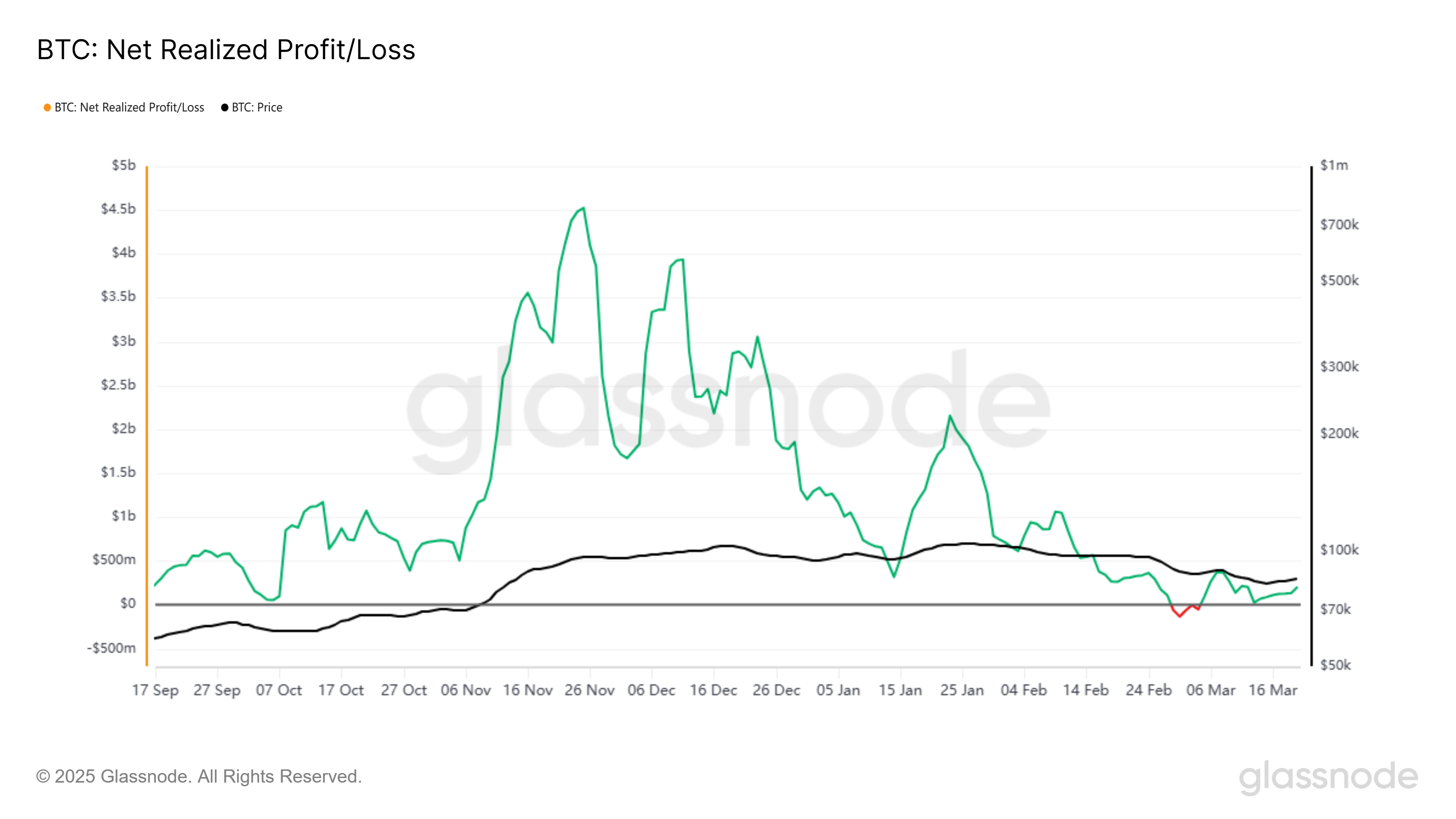
6. Long-term Bitcoin holders
On-chain data shows that there have been significant changes in the positions of long-term Bitcoin holders (LTH) this week, indicating that market sentiment has begun to shift from the previous selling trend to increasing holdings and covering positions, which may provide potential support for Bitcoin prices.
Compared with the sustained selling pressure from December to early February last year (when the net daily selling exceeded 600,000 BTC), the recent selling pressure has significantly weakened, and LTH holdings have returned to positive territory in recent weeks. This suggests that long-term holders have regained confidence in the market, which may indicate that the market is entering a phase of renewed capital inflows.
Subsequent market trends still need to pay attention to the linkage between changes in LTH holdings and Bitcoin prices. In particular, if the trend of increasing holdings continues, it may further stabilize the market and bring about a new round of upward momentum.
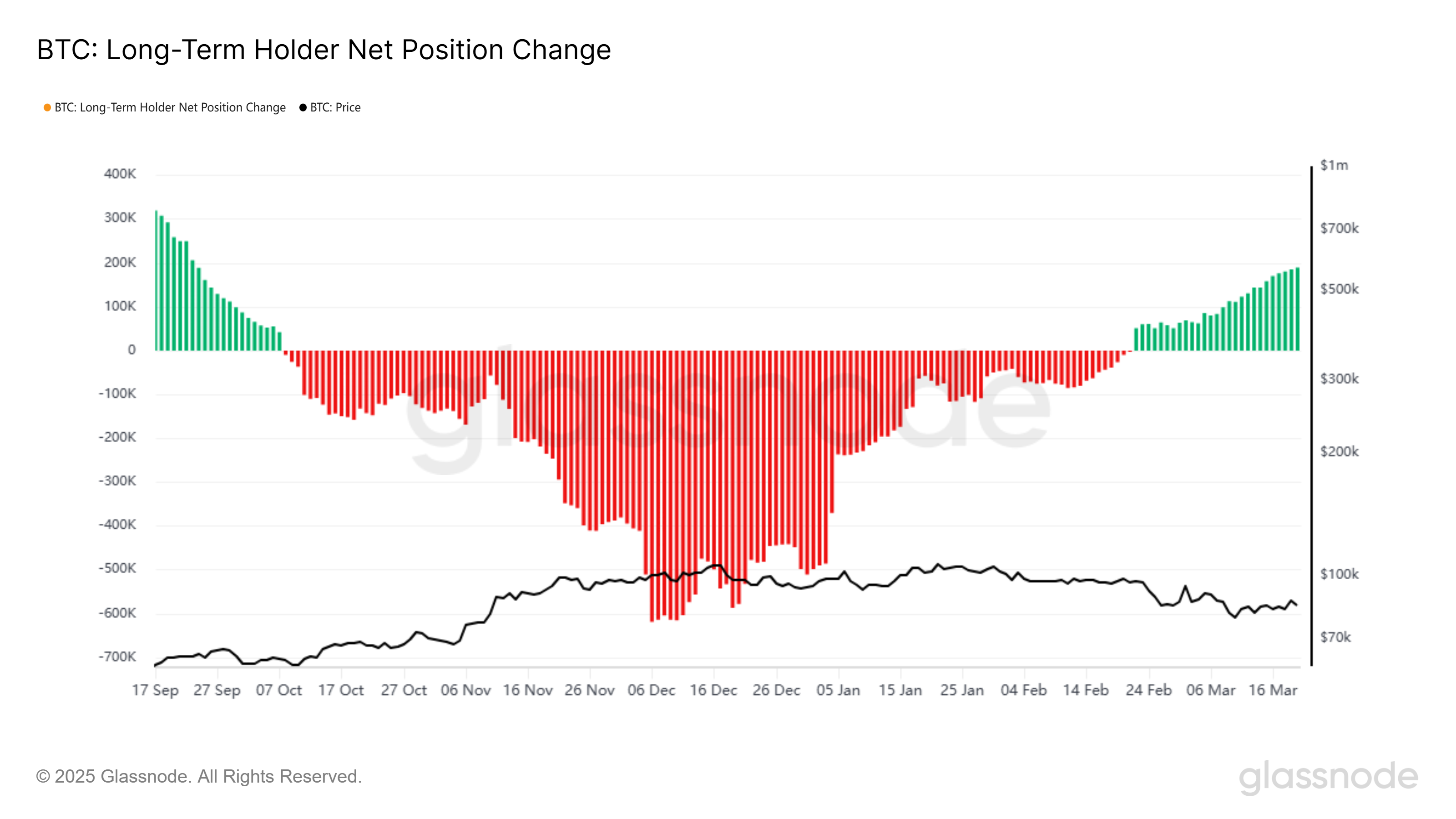
7. Bitcoin on-chain purchasing power
According to on-chain data , the supply of Bitcoin short-term holders (STH) continues to rise, market activity has increased, and more funds have flowed into short-term trading positions recently. Since mid-November last year, the supply of short-term holders has increased significantly, while the supply of long-term holders (LTH) has continued to decline, which may drive up short-term volatility in the market.
In the past few weeks, the supply of short-term holders has exceeded 14 million BTC, close to the historical high, indicating that the participation of short-term traders in the market has increased significantly, which may further exacerbate market price volatility. In contrast, the supply of long-term holders declined rapidly after December, and some LTHs chose to take profits at high prices, which provided market liquidity while also bringing certain selling pressure.
Future market trends will depend on whether short-term holders continue to drive market sentiment or bring the risk of a pullback due to profit-taking. At the same time, changes in the positions of long-term holders remain an important indicator for assessing the health of the market. If the supply of LTH begins to pick up, it may mean that the market has entered a new round of accumulation period.
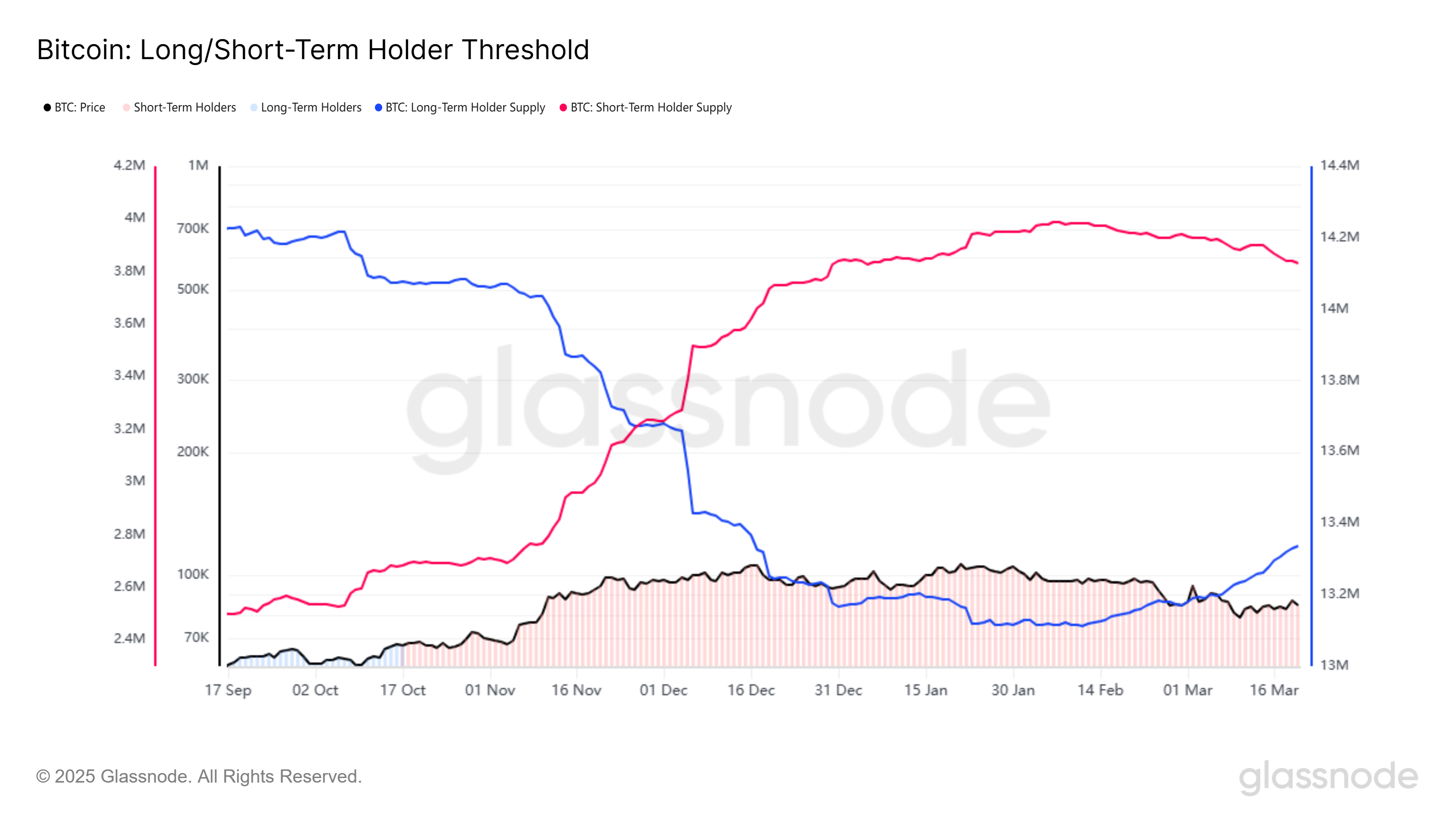
 Market analysis news this week
Market analysis news this week
1. Is the bear market really coming? The Bitcoin chain's "bull market index" fell to a two-year low, and the community was shocked to find a 20,000 bloodbath target
The on-chain analysis platform CryptoQuant released a report yesterday stating that the bull market index developed by CryptoQuant has fallen to 20, the lowest point since January 2023, which also shows that the current market conditions are weak. ( Continue reading )
2.ETH exchange inventory hit a 10-year low, Bitfinex Bitcoin long positions hit a six-month high, is a rebound coming?
Santiment pointed out today that in just 7 weeks, the available supply of ETH on exchanges dropped by 16.4% to 8.97 million, a 10-year low; while Bitfinex Bitcoin leveraged longs reached 80,333 BTC, worth approximately US$6.92 billion, a nearly six-month high. Is the bull market about to restart? ( Continue reading )
3. PlanB says the real bull market has not started yet: Bitcoin’s target this year is $160,000, and the four-year cycle convention may be broken
Recently, pessimistic expectations of the "end of the bull market" have spread across the market, but the well-known cryptocurrency analyst PlanB disagrees. He believes that "the real bull market has not yet appeared" and that Bitcoin may break the four-year bull-bear cycle convention and double to $160,000 in 2025. ( Continue reading )
4. Does market sentiment determine the thickness of your wallet? Fear and Greed Index Buy the dips& Top Sell Analysis
This study explores the threshold effect of the Crypto Fear and Greed Index (CFGI) and analyzes how market sentiment affects Bitcoin price movements. We test the effectiveness of "buy when extremely fearful, sell when extremely greedy" and reveal the correlation between different thresholds and investment returns, providing data support for investment decisions. ( Continue reading )
5. Is this bull market really different? Ten angles to rationally analyze the current market situation
This bull market is unprecedented, and some controversial truths may make you rethink your position at the table. ( Continue reading )
 Cryptocurrency regulation in various countries
Cryptocurrency regulation in various countries
1. OKX urgently stops Web3 wallet DEX aggregator: What impact will it have on users in cooperation with EU MiCA supervision?
2. South Korea's Bithumb exchange's scandals continue to spread: It was investigated for spending 3 billion won to buy a house for its former CEO, and the brokerage fee for listing the currency started at 2 million US dollars.
South Korean media YTN reported yesterday (20) that South Korean prosecutors conducted a seizure search on the headquarters of Bithumb, the second largest cryptocurrency exchange in the country, on March 20 because Bithumb was suspected of providing 3 billion won (more than 2 million US dollars) to its former CEO and board member, current Bithumb consultant Kim Dae-sik, to pay for his apartment rental deposit and purchase personal properties. ( Continue reading )
3. The new US stablecoin regulation has been implemented. What "fatal details" are hidden in it?
The U.S. Senate Banking Committee passed a stablecoin regulatory bill. The market generally paid attention to the compliance prospects of USDT and USDC, but ignored the two-year ban on algorithmic stablecoins. This article will explore the impact of the ban, the regulatory logic, and the uncertainty of future developments. (Continue reading )
Next week's market focus
March 24 (Monday)
- US: March manufacturing PMI, previous value 52.7
- US: March service industry PMI, previous value 51.0
March 25 (Tuesday)
- US: Conference Board Consumer Confidence Index in March, previous value 98.3
- US: New home sales in February, previous value 657K
March 26 (Wednesday)
- UK: February CPI (year-on-year), previous value 3.0%
- UK: Spring Budget
- US: Crude oil inventories, previous value 1.745M
March 27 (Thursday)
- US: Q4 GDP (quarterly growth rate), forecast 2.3%, previous value 3.1%
- US: Initial jobless claims, previous value 223K
March 28 (Friday)
- UK: Q4 GDP (year-on-year), forecast 1.4%, previous value 0.9%
- UK: Q4 GDP (quarterly growth), forecast 0.1%, previous value 0.0%
- US: Core PCE price index in February (year-on-year), previous value 2.6%
- US: Core PCE price index in February (month-on-month), previous value 0.3%









